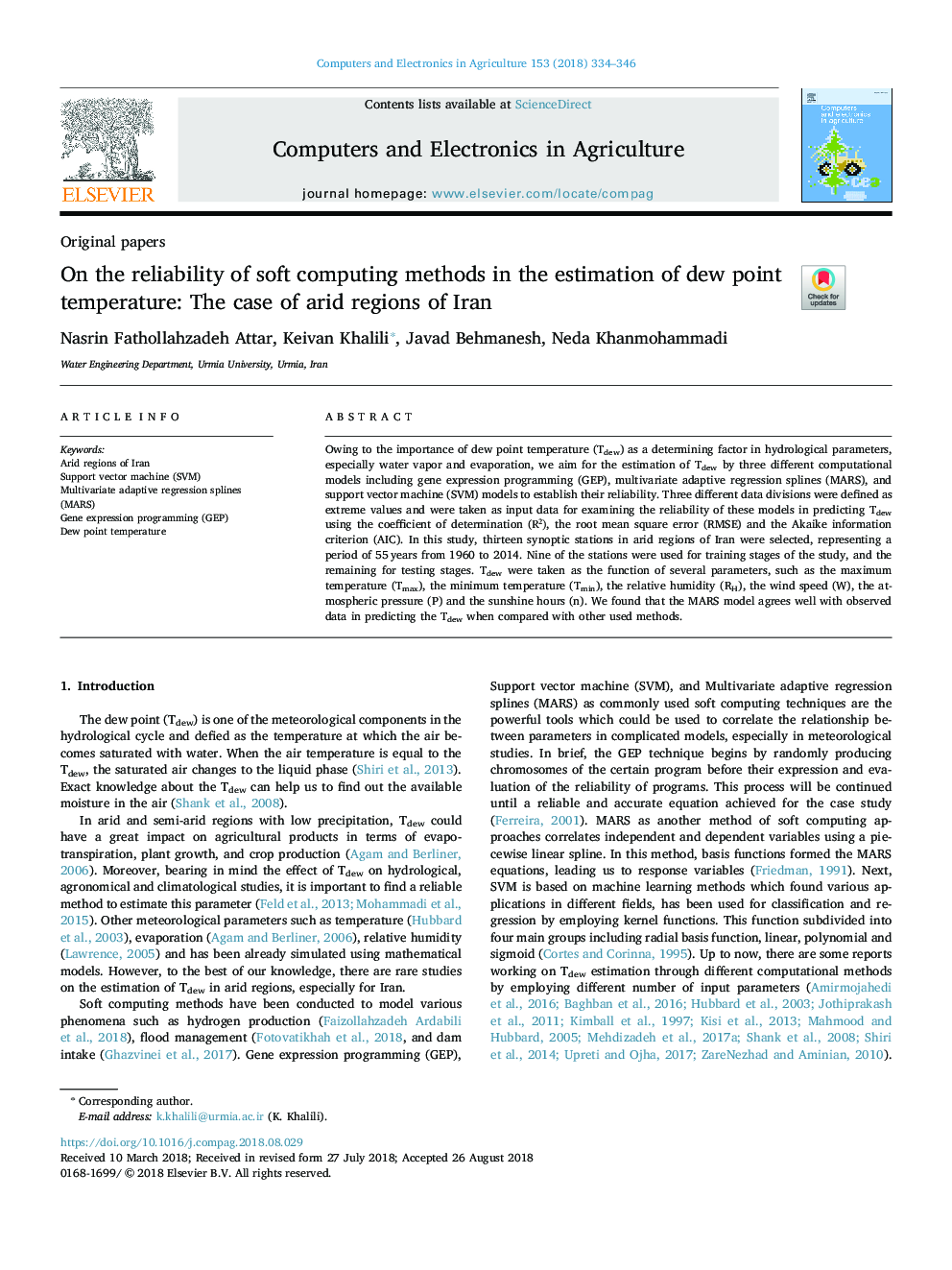| Article ID | Journal | Published Year | Pages | File Type |
|---|---|---|---|---|
| 11000016 | Computers and Electronics in Agriculture | 2018 | 13 Pages |
Abstract
Owing to the importance of dew point temperature (Tdew) as a determining factor in hydrological parameters, especially water vapor and evaporation, we aim for the estimation of Tdew by three different computational models including gene expression programming (GEP), multivariate adaptive regression splines (MARS), and support vector machine (SVM) models to establish their reliability. Three different data divisions were defined as extreme values and were taken as input data for examining the reliability of these models in predicting Tdew using the coefficient of determination (R2), the root mean square error (RMSE) and the Akaike information criterion (AIC). In this study, thirteen synoptic stations in arid regions of Iran were selected, representing a period of 55â¯years from 1960 to 2014. Nine of the stations were used for training stages of the study, and the remaining for testing stages. Tdew were taken as the function of several parameters, such as the maximum temperature (Tmax), the minimum temperature (Tmin), the relative humidity (RH), the wind speed (W), the atmospheric pressure (P) and the sunshine hours (n). We found that the MARS model agrees well with observed data in predicting the Tdew when compared with other used methods.
Keywords
Related Topics
Physical Sciences and Engineering
Computer Science
Computer Science Applications
Authors
Nasrin Fathollahzadeh Attar, Keivan Khalili, Javad Behmanesh, Neda Khanmohammadi,
